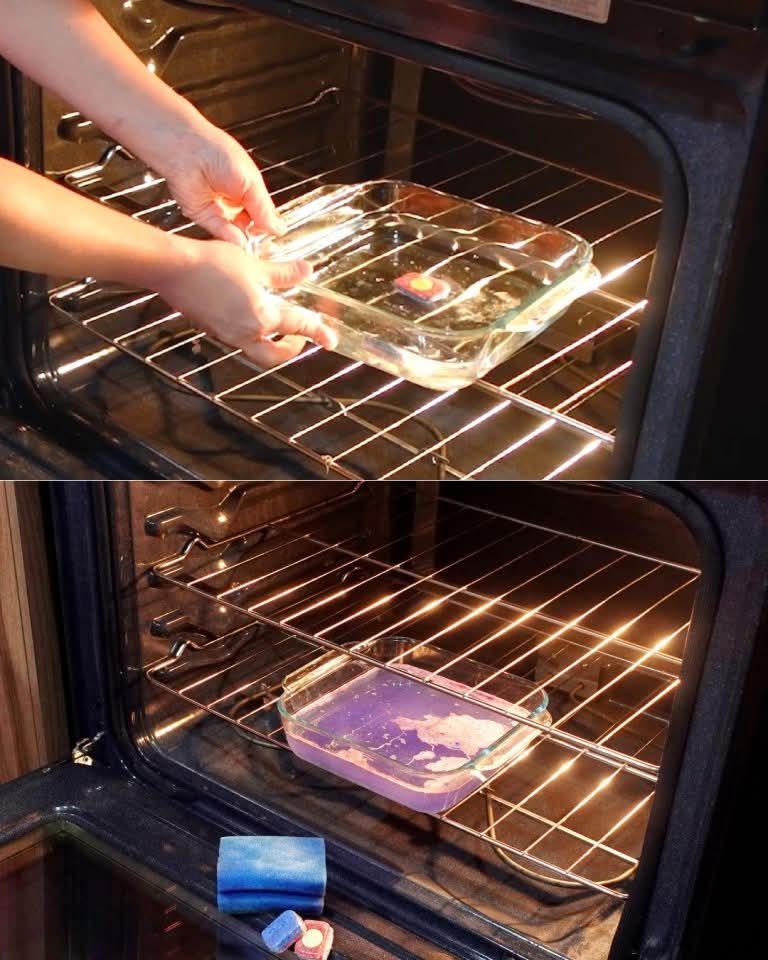ADVERTISEMENT
##### **Step 3: Apply the Baking Soda Paste to the Oven**
Using a sponge or your hands (wearing gloves if desired), apply the baking soda paste generously to the inside of the oven. Focus on the areas that have the most grease, stains, or build-up. Make sure to cover the oven floor, walls, and ceiling, and pay extra attention to the oven door if it’s particularly dirty.
You can use the plastic scraper to apply the paste in hard-to-reach areas or to spread it more evenly. Be sure to avoid getting the paste on any electrical components, such as the oven light or heating elements.
Once the entire oven is covered with the baking soda paste, allow it to sit for at least 12 hours, or overnight if possible. The baking soda will work its magic by loosening grease, grime, and burnt-on food, making it easier to remove when it’s time to scrub.
—
##### **Step 4: Prepare the Vinegar Solution**
While the baking soda paste is sitting, it’s a good time to prepare your vinegar solution. Fill a spray bottle with equal parts water and white vinegar. The vinegar will help dissolve the baking soda paste and neutralize odors as you clean.
—
##### **Step 5: Wipe Down the Oven**
After the baking soda paste has had enough time to sit, use a damp cloth to begin wiping away the paste. You should notice that the grime is loosening and coming off with ease. If necessary, use the plastic scraper to gently remove stubborn patches of dirt or grease.
Once the majority of the paste has been wiped away, it’s time to apply the vinegar solution. Spray the vinegar mixture directly onto any remaining areas of the oven that still have baking soda paste. You’ll see the paste fizz and bubble as the vinegar reacts with the baking soda, breaking it down even further.
Use a damp cloth or sponge to wipe away the fizzy mixture. You may need to repeat the process a couple of times to remove all the residue, but don’t worry—this is perfectly normal.
—
##### **Step 6: Final Touches**
Once you’ve wiped away the baking soda and vinegar, take a final pass with a clean, damp cloth to ensure all residue is gone. Pay extra attention to corners and edges where paste may have built up. If there are any streaks or spots left, wipe them down with a dry cloth to polish the oven’s surface.
Finally, replace the racks and trays you removed earlier. Your oven should now be sparkling clean and ready to use again!
—
### **Tips for Maintaining a Clean Oven**
Now that your oven is clean, you may want to keep it that way. Here are a few tips for maintaining a spotless oven:
– **Wipe up spills immediately**: After using your oven, try to wipe up spills and splatters as soon as possible. This prevents them from baking on and becoming harder to clean later.
– **Use a baking sheet**: When baking items that are likely to drip or spill, such as casseroles or pies, place a baking sheet on the rack below to catch any mess. This will help keep the bottom of your oven clean.
– **Regularly clean the oven door**: The oven door can accumulate grease and stains over time, so be sure to clean it regularly. Use a damp cloth or a glass cleaner for a streak-free finish.
– **Consider using a liner**: Oven liners are a great way to protect the bottom of your oven from spills and grease. They can be easily wiped clean and help reduce the frequency of deep cleanings.
—
### **Conclusion**
Cleaning your oven doesn’t have to be a time-consuming, difficult task. By using this quick and simple trick with baking soda and vinegar, you can keep your oven sparkling clean without the need for harsh chemicals or strenuous scrubbing. Regular cleaning not only keeps your oven in great shape, but it also promotes better cooking performance, hygiene, and safety.
With this method, you’ll find that your oven is not only cleaner but also ready to continue producing delicious meals for you and your family. Happy cleaning!
